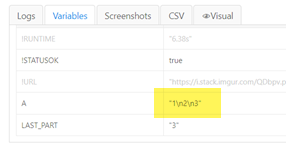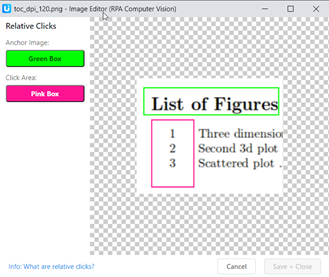Here is how to do it. The key part is to use input.substring(input.lastIndexOf('-'). In this example - is the separating character between the elements in the string.
{
"Command": "store",
"Target": "111-222-333",
"Value": "a",
"Description": ""
},
{
"Command": "executeScript_Sandbox",
"Target": "var input = ${a}; var last = input.substring(input.lastIndexOf('-') + 1); return last;",
"Value": "last_part",
"Description": ""
},
{
"Command": "echo",
"Target": "${Last_Part}",
"Value": "green",
"Description": ""
}
Example use case:
For a certain Citrix automation task OCRExtractRelative returns a string with the numbers of a (changing) table of content. It is unknown how many lines are there, but you always need the last entry. This is (“3”) in this example.
In the OCR result \n is the separating character. You can see this by looking at the Variables tab:

OCRExtractRelative input image:
toc_dpi_120.png image:

Macro code:
{
"Name": "ocr1",
"CreationDate": "2021-8-26",
"Commands": [
{
"Command": "open",
"Target": "https://i.stack.imgur.com/QDbpv.png",
"Value": "",
"Description": ""
},
{
"Command": "store",
"Target": "2",
"Value": "!ocrengine",
"Description": "Engine 2 is better for Western characters"
},
{
"Command": "OCRExtractRelative",
"Target": "toc_dpi_120.png",
"Value": "a",
"Description": "grab TOC numbers and OCR them"
},
{
"Command": "executeScript_Sandbox",
"Target": "var input = ${a};\n\nvar last = input.substring(input.lastIndexOf('\\n') + 1); \n\nreturn last;",
"Value": "last_part",
"Description": "split string and take last part"
},
{
"Command": "echo",
"Target": "${Last_Part}",
"Value": "green",
"Description": ""
}
]
}